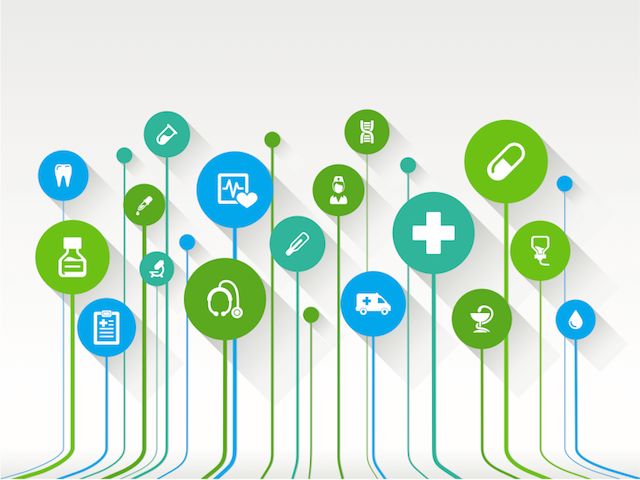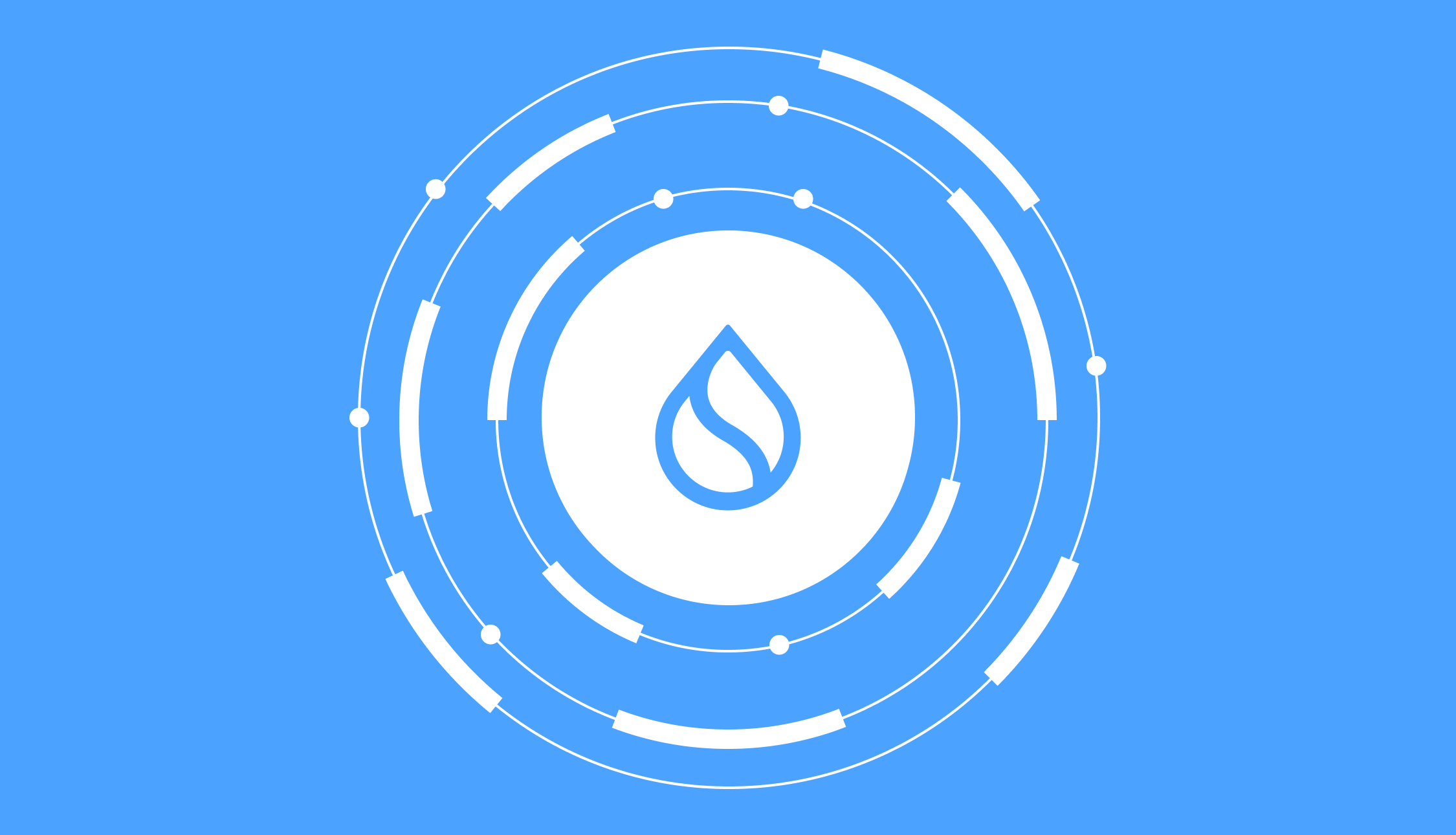How blockchain technology can improve the lives of 22 hospitals
The prospect of blockchain technology in the healthcare industry is commendable. A typical example is Intermountain Healthcare's pioneering deployment of blockchain technology. Headquartered in Utah, Intermountain Healthcare consists of 22 hospitals that are not for profit. The medical group has 180 clinical clinics with a total of more than 1,600 doctors and senior clinicians.
Intermountain is using blockchain-based technology, combined with artificial intelligence, to identify waste in its vast healthcare system, create better results for patients, and save money in all aspects.

BurstIQ CEO Frank Ricotta said that the future of healthcare will be driven by data, and blockchain technology is the underlying technology to achieve this goal. He explained: "The blockchain is a layer of trust that covers the Internet, allowing parties to securely transfer representations of value, such as health data." BurstIQ's compatible blockchain platform, HIPAA, manages and stores medical institutions. And analyzing big data provides an efficient way.
- Viewpoint | If these three technologies improve, blockchain technology will be more widely used
- Explore: Blocking and expansion of blockchains
- Analysis: The DAO governance trend is gradually rising, and the blockchain needs no braking mechanism?
Ricotta explained that BurstIQ addresses two fundamental challenges that plague the healthcare industry: supporting large amounts of data and protecting underlying data. BurstIQ's blockchain-based solutions support both granular data ownership, data sovereignty and privacy, and support across highly complex stakeholders such as patients, health systems, insurance companies, government agencies, biopharmaceutical organizations, and digital health solutions. Access to data such as business and medical research communities. And these are safe and large-scale.
BurstIQ can't work out of thin air. Its partner, Empiric Health, uses machine learning, artificial intelligence, and natural language processing to generate data that easily identifies the differences in care that patients provide. This technique analyzes many aspects of surgery and links them to the corresponding results. With accurate data on the effectiveness of the medical services provided, doctors can better determine which treatment options should be prescribed in the future to improve patient outcomes.

When Intermountain combined Empiric's analytical solutions with BurstIQ's blockchain-based platform in the surgical field, they reduced the cost of surgery and saved tens of millions of dollars in hospital systems over two years. This is just the beginning. Empiric's enabling analysis technology is now being introduced to the Intermountain system and new areas across the country.
“We are encouraged by the progress our customers have made in reducing costs and improving patient outcomes. Every hospital can benefit from this technology. We look forward to working with innovators across the United States to make this a reality.” Empiric Chief Technology Officer Justin Schaper said.
According to Ricotta, the BurstIQ platform makes accessing medical data easier and provides an engine for many of the systems running on the platform. BurstIQ enforces security domains. They connect to the health care provider's legacy system and provide an HL7 interface – an international standard for transmitting clinical and management data between medical applications and healthcare providers – for electronic healthcare systems for healthcare providers (EMR) and patient accounting systems.
BurstIQ is not the only blockchain provider in the medical field, but it appears to be the only publicly available blockchain support solution for blockchain-based solutions in the US healthcare industry. There are also other blockchain-based healthcare solution providers, including Guardtime and Oasis Labs. Hyperledger also has a health tracker. IBM is also building a blockchain-based healthcare ecosystem. Patientory is an application for storing and securely transferring medical information between patients and providers.
The Guardtime approach is different from BurstIQ. Guardtime's technology does not place health care records on the blockchain, but hashes the medical records (thinks as thumbprints) and logs the hashes to the Guardtime blockchain. This is what they did in Estonia, where all medical records are digital. In fact, Guardtime hashes every medical record of every health care provider and medical institution in Estonia every second. Recording the hash value on the blockchain can easily detect that the medical data has been tampered with. Like BurstIQ, Guardtime is also creating applications that aggregate and analyze data from different sources and enable parties to securely share medical data and share it only among those who are authorized to access it.
Ain Aaviksoo, chief medical officer and general manager of Guardtime in Estonia, explained that because medical data was hashed, Estonians believe that medical data has not been abused . Aaviksoo believes that innovation in the medical field begins with the same premise that there is only one version of medical data, ie how, when, and by whom the data was created. The hash function ensures that only the real data is acquired when it is created.
Aaviksoo further explained that you can prevent unauthorized people from using medical information by creating rules that protect medical information. Aaviksoo suggests that workflows can be managed through smart contracts, but they can also be solved with less complex techniques. Aaviksoo believes that the most important thing is to create a trusted workflow.
In the healthcare arena, we are still at a very early stage of blockchain deployment. But what's exciting is that large medical institutions are working with blockchain innovators to bring triple benefits: better treatments, better interaction between doctors and patients, and cost savings. We can only hope that these results will be widely disseminated and attract the attention of the US medical system. They should begin to explore how to use the pioneering work that is going on in Utah and Estonia to benefit doctors and patients.
Frank Ricotta and Ain Aaviksoo will discuss blockchain-based solutions at upcoming blockchain-based conferences in healthcare. There are many reasons why blockchain-based solutions are marginalized. But these two subjects have made real progress. This is worth paying attention to!
When asked how to get medical experts interested in blockchain-based solutions, Ricotta said: "We tried to hide all the blockchain stuff. We made it less horrible and focused on solving their problems."
This article is from the Forbes Foreign Language Edition by Andrea Tinianow, CIO of Global Kompass Strategies, a US-based management consulting firm. In 2014, the Marques government recruited her to establish an economic development unit in the Delaware State Department and conceived the Delaware blockchain program, which triggered a “blockchain amendment”.
The article is compiled by the Bluemountain Labs team, the English copyright belongs to the original author ( original ), please reprint in Chinese.
We will continue to update Blocking; if you have any questions or suggestions, please contact us!
Was this article helpful?
93 out of 132 found this helpful
Related articles
- The Bank of International Settlements economists propose a new method for financial market monitoring based on DLT
- Weizhong Bank issued a “good” social governance framework and used blockchain for social governance
- Who can take the lead in breaking the exchange contract?
- Viewpoint | Why is the Chinese central bank eager to issue its own digital currency?
- Experts argued: Libra turned out, what impact will the central bank's digital currency have?
- The key to the DeFi movement: use cases and opportunities for synthetic assets
- Moscow used the blockchain to vote for the election, was cracked in 20 minutes and won $15,000 in prize money.






